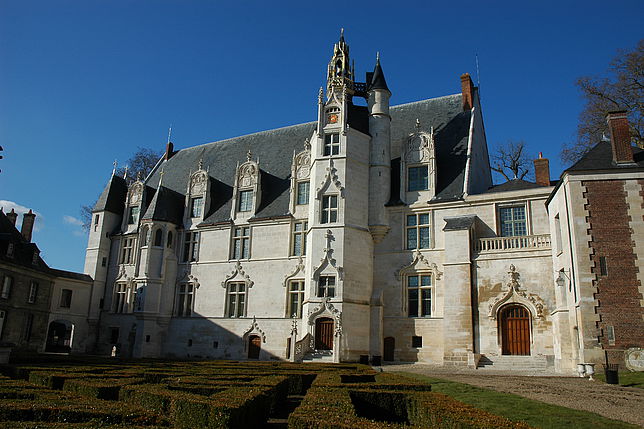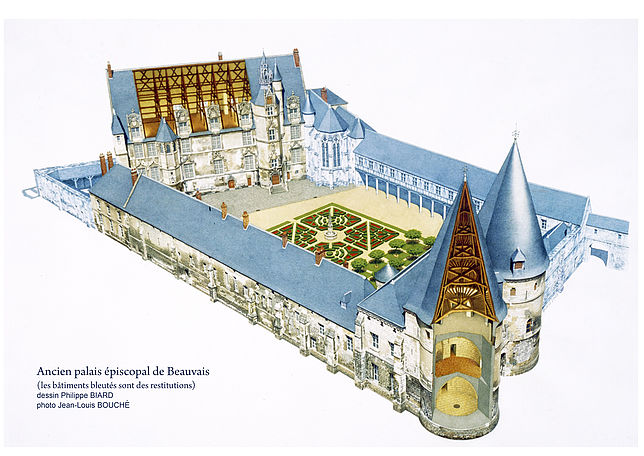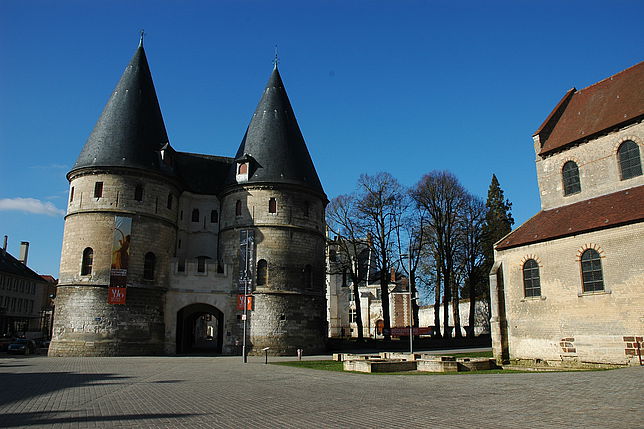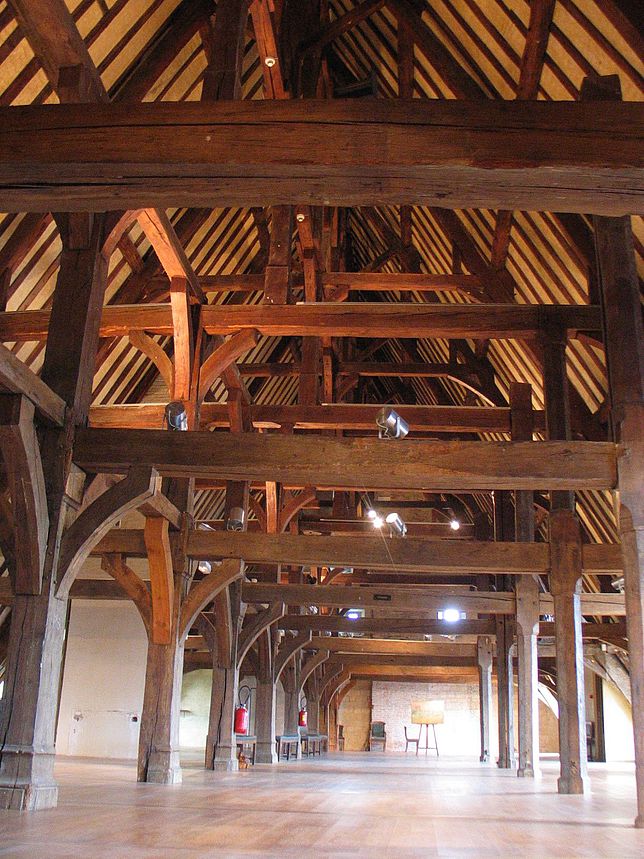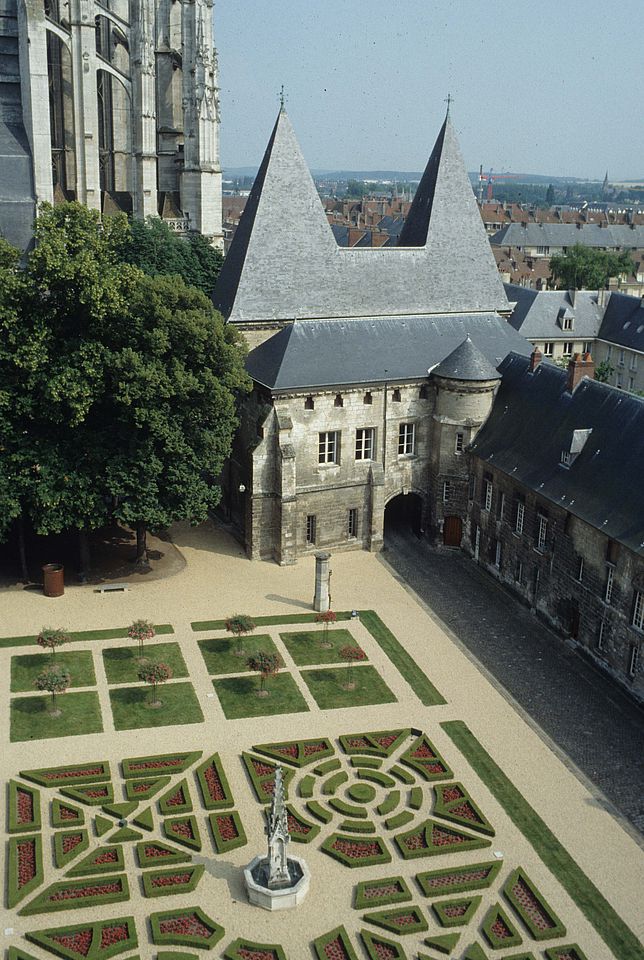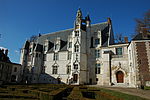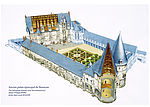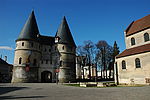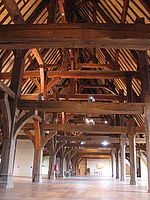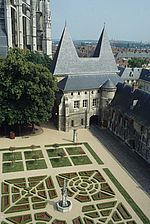Bishop's residence
MUDO – Musée de l'Oise is housed in the former episcopal palace, residence of the bishops of Beauvais, the city's Counts, and Peers of France. This beautiful architectural complex was built in the shadow of the Beauvais cathedral in the 12th century by Henri of France, the king's brother. It was built upon the Roman ramparts. In the 14th century, to affirm his authority in the wake of a riot by the city's inhabitants, the bishop had a fortified entrance built, complete with two towers.
Two centuries later, the main dwelling was rebuilt by Bishop Louis Villiers of Isle Adam in a Renaissance spirit, yet maintaining the characteristic gothic decoration. Its façade is embellished with a stair tower known as the “clock tower” topped off by a bell tower housing three bells, one of them dating from 1506.
In the loft, the majestic, imposing 14-meter-high roof structure is one of the most spectacular elements of the former bishop's palace.
A Palace of Many Uses
After the Revolution, the palace was assigned to several uses: police headquarters in 1800, and back to bishop's palace in 1822. It was used as the palais de justice in 1846; Prosper Mérimée had it registered on the list of historical monuments in 1848.
During World War II, the departmental museum housed in a building north of the cathedral suffered bombardments. The rescued works and objects were then temporarily stored in the loft of the former bishop's palace. In 1973, the judicial administration left the palace, leaving room for the collections of the Departmental Museum of the Oise, which today has become MUDO – Musée de l'Oise.


